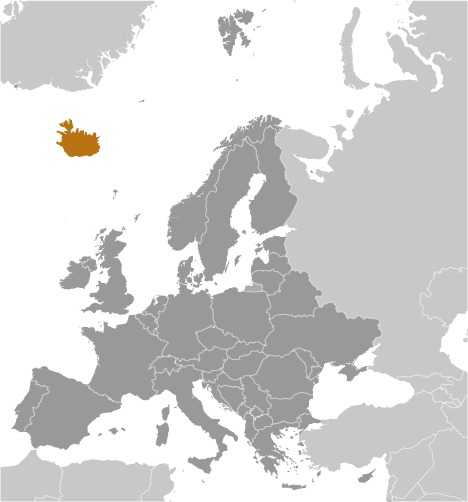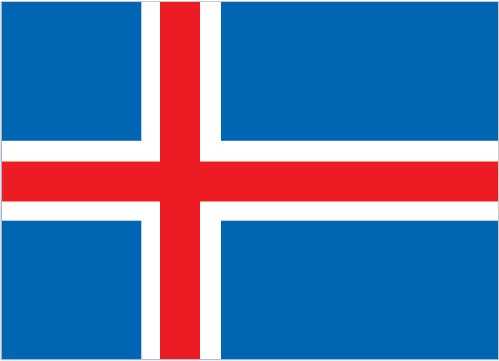Introduction
Background
Settled by Norwegian and Celtic (Scottish and Irish) immigrants during the late 9th and 10th centuries A.D., Iceland boasts the world's oldest functioning legislative assembly, the Althingi, which was established in 930.
Geography
Area
total: 103,000 sq km
land: 100,250 sq km
water: 2,750 sq km
Climate
temperate; moderated by North Atlantic Current; mild, windy winters; damp, cool summers
Natural resources
fish, hydropower, geothermal power, diatomite
People and Society
Population
total: 364,036
male: 182,268
female: 181,768 (2024 est.)
Ethnic groups
Icelandic 78.7%, Polish 5.8%, Danish 1%, Ukrainian 1%, other 13.5% (2024 est.)
Languages
Icelandic, English, Polish, Nordic languages, German
Religions
Evangelical Lutheran Church of Iceland (official) 58.6% Roman Catholic 3.8%, Independent Congregation of Reykjavik 2.6%, Independent Congregation of Hafnarfjordur 1.9%, pagan worship 1.5%, Icelandic Ethical Humanist Association 1.4%, other (includes Zuist and Pentecostal) or unspecified 18.7%, none 7.7% (2024 est.)
Population growth rate
0.85% (2024 est.)
Government
Government type
unitary parliamentary republic
Capital
name: Reykjavik
Executive branch
chief of state: President Gudni Thorlacius JOHANNESSON (since 1 August 2016)
head of government: Prime Minister Bjarni BENEDIKTSSON (since 9 April 2024); note - Katrin JAKOBSDOTTIR resigned on 5 April 2024 in order to be a candidate in the 1 June 2024 presidential election.
Legislative branch
description: unicameral Althingi or Parliament (63 seats; members directly elected in multi-seat constituencies by closed-list proportional representation vote using the D'Hondt method; members serve 4-year terms)
Economy
Economic overview
high-income European economy; frozen EU accession application but Schengen Area member; major tourism, fishing, and aluminum industries; complex regulatory environment; large FDI recipient; highly educated workforce
Real GDP (purchasing power parity)
$21.227 billion (2022 est.)
$19.794 billion (2021 est.)
$18.94 billion (2020 est.)
Real GDP per capita
$55,600 (2022 est.)
$53,100 (2021 est.)
$51,700 (2020 est.)
Agricultural products
milk, chicken, barley, lamb/mutton, potatoes, pork, beef, eggs, other meats, cucumbers/gherkins (2022)
Industries
tourism, fish processing; aluminum smelting; geothermal power, hydropower; medical/pharmaceutical products
Exports
$13.044 billion (2022 est.)
$9.555 billion (2021 est.)
$7.197 billion (2020 est.)
Exports - partners
Netherlands 27%, UK 9%, US 8%, Germany 8%, France 6% (2022)
Exports - commodities
fish, aluminum, iron alloys, aluminum wire, animal meal (2022)
Imports
$13.146 billion (2022 est.)
$10.065 billion (2021 est.)
$7.518 billion (2020 est.)
Imports - partners
Norway 12%, Netherlands 10%, Denmark 8%, Germany 8%, China 7% (2022)
Imports - commodities
refined petroleum, aluminum oxide, cars, carbon-based electronics, aircraft (2022)
Exchange rates
Icelandic kronur (ISK) per US dollar -
Exchange rates:
135.28 (2022 est.)
126.989 (2021 est.)
135.422 (2020 est.)
122.607 (2019 est.)
108.3 (2018 est.)
Page last updated: Thursday, May 23, 2024




